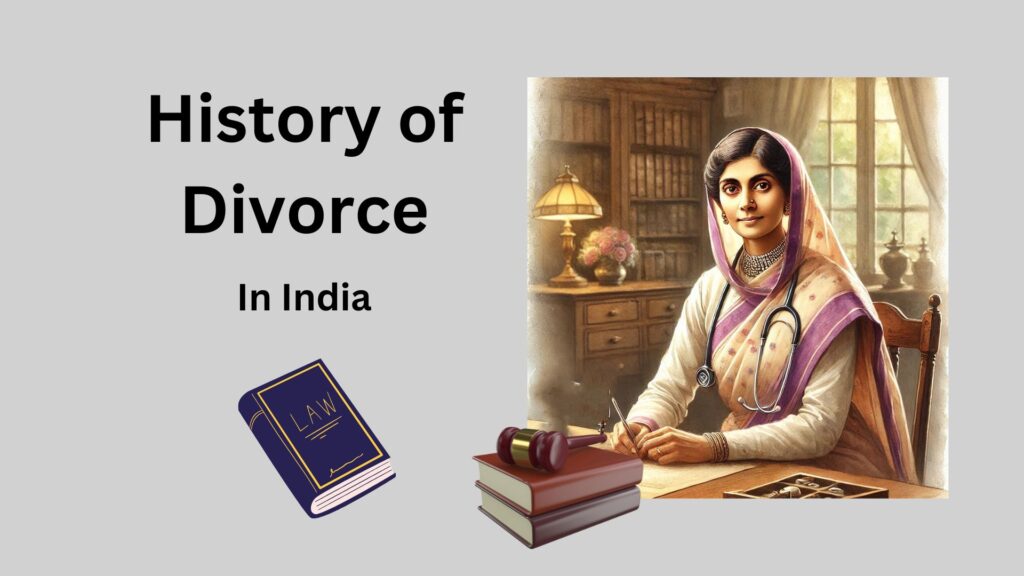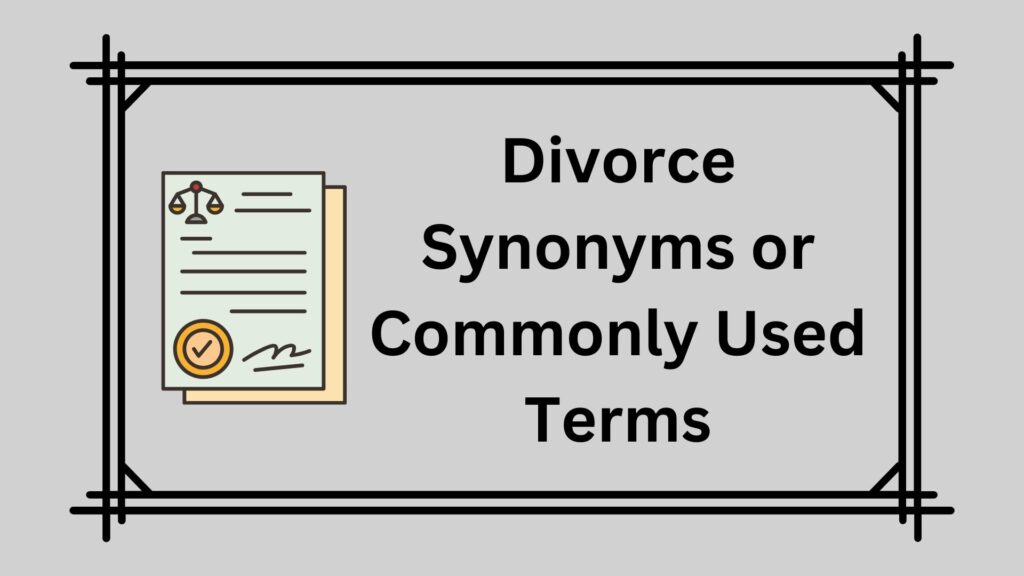
History of the Practice of Divorce
If one looks at social media, there is a sense that divorce is a new practice and has been increasing in India. In truth, divorce has been around in the sub-continent for more than five centuries, if not earlier. The nature of marriages was also different; India did not have a nuclear family system in the past. In joint families, the husband-wife relation was not central in the day-to-day affairs of the larger family unit. Social scientists mention that in areas that followed matrilineal systems, the wedding was not a sacred ceremony. Marriage was contractual. Until recently, marriage was not a binding relationship among many of the tribes and Dalit castes of India.
The oldest known instances of divorce in India are not well-documented in ancient texts. References to the dissolution of marriages can be traced back to early Hindu scriptures and legal codes. Here are some key points:
Manusmriti (Laws of Manu)
The Manusmriti, one of the earliest and most authoritative Hindu legal texts (circa 200 BCE–200 CE), discusses the conditions under which a marriage could be dissolved. It mentions that a wife could be abandoned or replaced under certain circumstances, such as infertility, adultery, or disrespect towards the husband. However, these rules were heavily skewed in favour of men, and women had limited rights in seeking separation.
Arthashastra
The Arthashastra, written by Kautilya (circa 4th century BCE), provides a more secular and pragmatic view of marriage and divorce. It acknowledges the possibility of divorce and outlines conditions under which a marriage could be dissolved, including mutual consent, abandonment, or cruelty. It also mentions the return of the wife’s dowry in case of divorce.
In ancient India, among the upper castes, divorce was not common and was generally stigmatised, especially for women. However, there were provisions for separation in certain communities and under specific circumstances. Among some tribal and regional communities, divorce was more accepted and practised, often with simpler procedures compared to the rigid norms of upper-caste Hindu society.
Early Islamic Influence
With the advent of Islam in India (around the 7th–12th centuries), the concept of Talaq (divorce) became more prevalent, especially in regions with significant Muslim populations. Islamic law provided clearer and more structured guidelines for divorce, including the rights of women to seek separation through Khula.
As mentioned, the oldest known instances of divorce in India are rooted in ancient Hindu and secular legal texts like the Manusmriti and Arthashastra, which outline conditions for the dissolution of marriage. However, the practice was limited and heavily influenced by societal norms and gender biases. The arrival of Islam introduced more formalised divorce practices, which became integrated into the legal and cultural fabric of India over time. While ancient texts and practices indicate that divorce existed in some form, there are no specific records of individual divorce cases from ancient India. The focus of historical records was often on royal or elite families, and personal matters like divorce were rarely documented.
Records show that an Indian divorce act existed in the nineteenth century. The Indian Divorce Act 1869 was an important piece of legislation for Christians in India. The Act provided a clear process for divorce, judicial separation, or annulment. It underlined the reasons for divorce and ensured fair handling of marital disputes.
Rukhmabai Raut
One of the earliest recorded legal divorces in India involved Rukhmabai Raut, who, in 1885, became the first Hindu woman to legally obtain a divorce. Her case challenged the traditional norms of arranged marriages and set a precedent. She faced immense social pressure and opposition for seeking a divorce, as it was a taboo at the time. Her case brought attention to issues like child marriage and women’s rights, eventually contributing to legal change.
Divorce Synonyms or Commonly Used Terms

In any divorce, there is a period of separation before the formal process. In certain court cases, the period of separation is mandatory. While researching other terms connected to divorce, it was no surprise that there are quite a few in the current parlance that, while not strictly a stand-in for divorce, more or less convey similar situations and emotions evoked by the process. The well-known synonyms for divorce include:
- Separation
- Dissolution (of marriage)
- Annulment (though this is legally distinct from divorce)
- Split
- Breakup
- Parting
- Divorcement (noun form, rarely used)
Legal Terms for Divorce in India
In Indian legal parlance, the term “divorce” is commonly used, but there are specific terms and phrases associated with different laws and contexts:
- Dissolution of Marriage: This is a formal legal term used in statutes and court proceedings indicating the legal termination of a marital union.
- Judicial Separation: A court-decreed arrangement where spouses live separately without dissolving the marriage. In India, judicial separation is distinct from divorce and is outlined in the Hindu Marriage Act of 1955.
- Annulment: This refers to declaring a marriage null and void, as if it never happened, based on specific grounds like fraud or incapacity.
- Divorce Decree: The official court order that legally ends a marriage.
- Irretrievable Breakdown of Marriage: A ground for divorce under Indian law, where the marriage is deemed beyond repair.
- Mutual Consent Divorce: When both parties agree to end the marriage amicably.
- Contested Divorce: When one party files for divorce, and the other contests it.
Origin of the Terms
As expected, most of the terms related to divorce have a Latin origin.
Divorce: The term “divorce” originates from the Latin dīvortium, derived from dīvertere, meaning “to turn aside”, “division”, or “separate.” This Latin term evolved into the Old French which was then adopted into Middle English.
Dissolution: In Indian legal parlance, while “divorce” is the prevalent term, “dissolution of marriage” is also commonly used in legal documents and proceedings. This term also has Latin roots, derived from dissolvere, meaning “to loosen” or “to dissolve” or dissolutio, meaning “a loosening or breaking apart.”
Annulment: This comes from the Latin word annullare, meaning “to make void.”
Judicial Separation: Combines “judicial” (related to courts) and “separation” (from Latin separatio, meaning “a parting”).
Specific Laws in India
In India, at present, divorce laws vary based on religion and personal laws:
Hindu Marriage Act, 1955: The codification of the Hindu Marriage Act in 1955 introduced legal provisions for divorce among Hindus. It governs divorce for Hindus, Buddhists, Jains, and Sikhs.
Muslim Personal Law: The Dissolution of Muslim Marriages Act of 1939 outlined the grounds upon which a Muslim wife could seek divorce. The current law governs divorce for Muslims, where terms like Talaq (unilateral divorce by the husband), Khula (divorce initiated by the wife), and Mubarat (mutual divorce) are used. The provision for triple Talaq was recently removed by the court.
Christian Marriage Act, 1872: Governs divorce for Christians.
Parsi Marriage and Divorce Act, 1936: Governs divorce for Parsis.
Special Marriage Act, 1954: Applies to inter-religious marriages and provides for divorce.
Cultural and Regional Terms
In India, colloquial terms for divorce may vary by language and region. For example:
In Hindi, divorce is often referred to as तलाक (Talaq) or विवाह विच्छेद (Vivah Vichhed). In Tamil, it might be called திருமண முறிவு (Thirumanam Murivu). In Bengali, it is known as তালাক (Talaq) or বিবাহবিচ্ছেদ (Bibaha Bichchhed). These terms reflect the diverse legal, cultural, and linguistic landscape of the country.
Conclusion
Divorce, also known as dissolution, has a long and complex history in India, evolving alongside societal norms and legal interpretations. Landmark cases like Rukhmabai’s in 1885 highlight the struggles and progress made in women’s rights and access to divorce. While legal terminology includes terms like annulment and judicial separation, the core concept of divorce signifies the legal ending of a marriage, reflecting changing social attitudes and legal frameworks.
To read more about the Divorce Act in India read our blog here. If you want to follow trends and statistics on divorce rates read the blog here.
Download the Rematch app for better connections and to find your perfect match.
References
“Glossary of Matrimonial Legal Terms.” Divorce Lawyer India. Accessed February 5, 2025. https://www.divorcelawyerindia.com/glossary-of-matrimonial-legal-terms/.
“Judicial Separation in India.” Divorce Lawyer New Delhi. November 12, 2024. https://www.divorcelawyernewdelhi.com/2024/11/12/judicial-separation-in-india/.
Altekar, A. S. The Position of Women in Hindu Civilization. Motilal Banarsidass, 1956.
Arunima, G. There Comes Papa: Colonialism and the Transformation of Matriliny in Kerala, Malabar, c. 1850–1940. Hyderabad: Orient Longman, 2003.
Bühler, Georg. The Laws of Manu. Sacred Books of the East, Vol. 25, 1886.
Chandra, Sudhir. Rukhmabai: A Woman’s Battle for Freedom. New Delhi: Penguin Books India, 2008.
Mulla, D. F. Principles of Mahomedan Law. LexisNexis, 2017.
Shamasastry, R. Kautilya’s Arthashastra. Mysore Printing and Publishing House, 1915.
Singh, K. S. People of India: An Introduction. Anthropological Survey of India, 1992.

